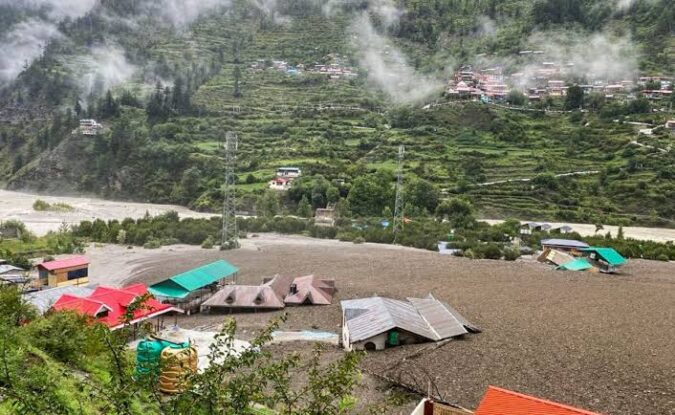On Tuesday, a devastating cloudburst struck Dharali village in Uttarkashi district of Uttarakhand. The sudden downpour caused the water level of the Kheer Ganga River to rise rapidly, resulting in a destructive flow of debris, rocks, and water that swept away several homes and shops. In this tragic natural disaster, four people have been confirmed dead, while many others remain missing or trapped under the rubble. In such cases, it’s important to understand the rules and laws regarding government compensation for deaths caused by cloudbursts and other natural disasters.
These Incidents Mostly Occur During Monsoon
In India, cloudburst incidents are common during the monsoon season, especially in hilly regions. These disasters often lead to severe destruction and loss of life and property. To support the affected families financially, the government provides compensation. But what are the rules and the process? Let’s understand how compensation is given and on what basis.
Who Provides Compensation for Cloudbursts?
In the event of a cloudburst or any natural disaster that leads to loss of life or property, both the central and state governments provide compensation. This aid comes under the National Disaster Response Fund (NDRF) by the central government and the State Disaster Response Fund (SDRF) by the respective state governments. These provisions are made under the Disaster Management Act, 2005, which outlines the framework for managing disasters and providing relief, including compensation.
Also Read: Does Travel Insurance Cover Flight Delays or Cancellations Caused by Fog?
How Much Compensation is Given?
In cases of death due to a cloudburst, flood, or any other natural disaster, the central government, in coordination with state governments, provides financial aid and additional assistance to the victims. As per the current policy, the family of each deceased person is entitled to ₹2 lakh as compensation from the central government. Additionally, state governments like Uttarakhand often provide an extra relief amount, which can go up to ₹4 lakh.
Moreover, the entire treatment cost of those seriously injured is covered by the government. There are also separate compensations for loss of property, including homes, crops, and livestock.
To claim the compensation, the deceased’s family must apply to the local administration with documents such as the death certificate, post-mortem report, and identity proof.

